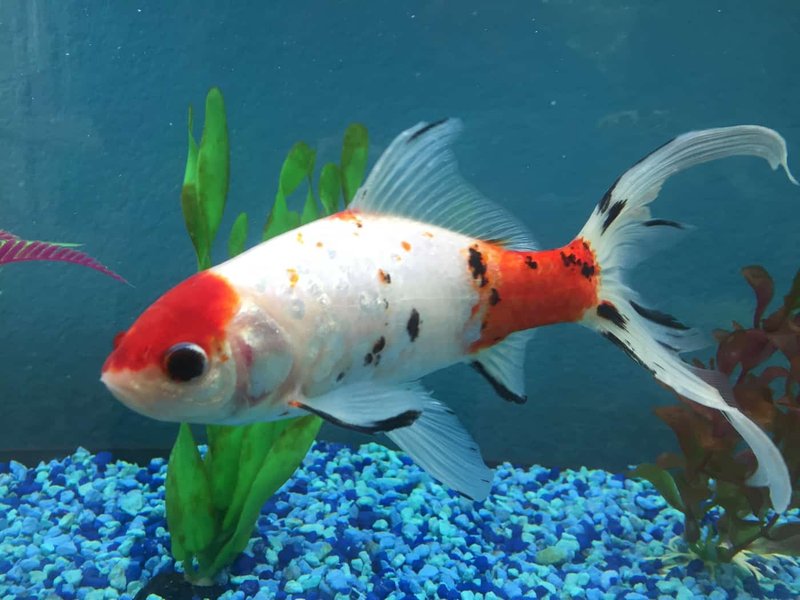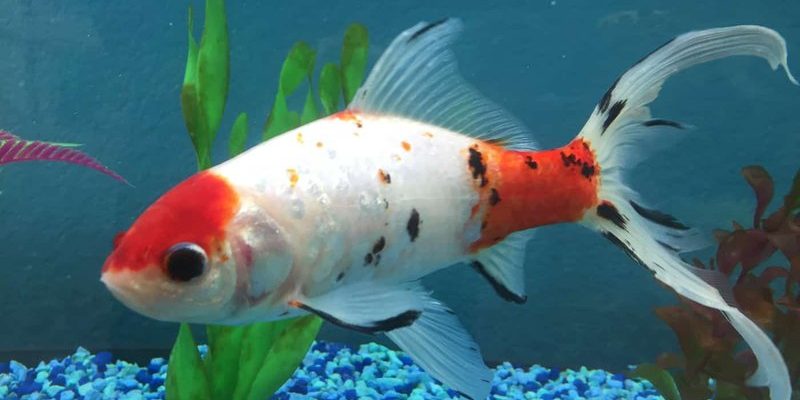
So, what’s the difference between coldwater and warmwater fish? Coldwater fish thrive in cooler temperatures, usually below 70°F. They can survive the winter months without much trouble. On the flip side, warmwater fish prefer warmer temperatures, generally above 70°F, and can become sluggish in the colder months. Let’s dive into the top 10 fish for your outdoor pond, covering both types, so you can create your perfect pond environment!
1. Koi: The Colorful Showstopper
Koi are perhaps the most recognized fish for outdoor ponds. These beautiful creatures come in various colors and patterns, making them a stunning addition to any setup. They’re not just pretty to look at; Koi are also hardy and can live for decades. Typically, they’ll flourish best in larger ponds, as they need space to swim and play.
When thinking about Koi, consider their size. They can grow up to 2-3 feet long, depending on the breed and pond conditions. They generally do well in water temperatures between 50°F and 80°F. Plus, Koi are social fish, so it’s a good idea to keep at least a few together.
Feeding Koi is straightforward; they enjoy high-quality pellets and occasional treats like fruits and vegetables. Just remember to avoid overfeeding!
2. Goldfish: The Classic Choice
Goldfish are like the friendly neighbor of the pond world; they’re easy-going and popular for a reason. These little swimmers are incredibly adaptable and can thrive in various conditions, making them an excellent choice for beginners. While goldfish are often kept in aquariums, they can also do wonderfully in outdoor ponds.
One of the coolest things about goldfish is their variety. From the common goldfish to fancy breeds like the Ranchu or Oranda, there’s something for everyone. They can live in temperatures ranging from 32°F to 75°F, which means they can handle cooler conditions better than many other fish.
Did you know? Goldfish can grow quite large, sometimes up to 12 inches in length, so make sure they have enough room in your pond. A mix of plants and open swimming space keeps them happy.
3. Shubunkin: The Rainbow Fish
If you’re looking for a fish that has a unique flair, Shubunkin is your fish! They are a type of goldfish with a striking blend of colors, often resembling a moving art piece in your pond. These fish are hardy and adaptable, thriving in both cold and moderately warm water.
Shubunkins can grow up to 10-12 inches long, providing plenty of visual interest in your pond. They enjoy a temperature range similar to goldfish, making them a great companion fish.
A fun fact? Shubunkins are known for their lively personalities! They love to swim around and explore, so creating hiding spots and plants in your pond will help keep them stimulated.
4. Comet Goldfish: The Swimmer’s Delight
Comet goldfish are often confused with regular goldfish, but they have a distinct feature: long, flowing tails. These fish are known for their playful nature and their ability to jump, so keep that in mind if you have a shallow pond.
They thrive well in a temperature range similar to other goldfish, making them suitable for outdoor environments. Plus, they’re hardy and can survive in various settings, whether you’re a beginner or an experienced pond keeper.
Pro tip: Since Comets can reach sizes of 6-8 inches, providing them with ample space and good water quality is essential. This will support their growth and ensure they lead happy, healthy lives.
5. Sarasa Comet: A Splash of Color
Sarasa Comets are essentially the patterned cousins of the regular Comet goldfish, showcasing vibrant red and white markings that can be truly eye-catching. They share the same hardiness and care requirements, making them just as easy to keep.
This breed is known for its lively disposition, darting around the pond and bringing a sense of joy. They enjoy a similar temperature range as other goldfish, so if you’re already planning a goldfish pond, adding Sarasa Comets can enhance the colors in your setup.
Remember: Like other goldfish, Sarasa Comets can grow large, so ensure your pond is spacious enough for them to thrive.
6. Rainbow Shiner: The Colorful Swimmers
If you’re interested in something a bit different, consider the Rainbow Shiner. These small, colorful fish are perfect for smaller ponds and add charm with their vivid colors and lively behavior.
Rainbow Shiners thrive in cooler waters, making them a solid choice for coldwater ponds. They tend to mature at around 3-5 inches, which means they won’t take up too much space.
Did you know? These fish are social and prefer to be in schools of at least 5-6. This group dynamic allows them to showcase their natural behaviors, making your pond more dynamic and lively.
7. Catfish: The Bottom Feeders
Catfish might not be the first thing that comes to mind when you think of pond fish, but they play a crucial role in maintaining the ecosystem. These fish are excellent bottom feeders, helping to keep the pond clean by eating leftover food and detritus.
They’re typically more suited for warmer waters, thriving in temperatures around 75°F and above. They can grow quite large, so you’ll need a spacious pond for these guys to roam freely.
Fun fact: Catfish have whisker-like barbels that help them sense their environment. This makes them fascinating to watch as they forage around your pond.
8. Bluegill: The Fighting Fish
Bluegill are another popular choice for warmwater ponds. These fish are known for their spirited behavior and vibrant colors. They can be a fun addition if you’re looking to introduce some fishing into your pond experience.
Typically, Bluegill can grow to about 6-10 inches and thrive in temperatures ranging from 70°F to 85°F. They prefer areas with vegetation for shelter, which helps keep them safe and comfortable.
Here’s the thing: Bluegill are known to reproduce quickly, so if you plan to have other fish in your pond, keep an eye on their population to maintain balance.
9. Gold Brim: The Specialty Species
If you want a unique twist in your pond, consider Gold Brim. These fish are similar to Bluegill but provide a distinct golden hue that adds charm to any setting. They thrive in warm waters and can often be found in areas with plenty of vegetation.
Growing up to 6-8 inches, they are suitable for smaller ponds and bring a vibrant touch to the underwater landscape. They are also quite hardy, which makes them an excellent choice for beginners.
Remember: Just like Bluegill, Gold Brim can reproduce quickly, so monitoring their numbers is essential to prevent overcrowding.
10. Fathead Minnow: The Tiny Helpers
Last but not least, Fathead Minnows are often used for stocking ponds because they are excellent at establishing a balance in the ecosystem. These small fish grow only about 2-3 inches long and thrive in both coldwater and warmwater environments.
One of their key benefits is that they serve as a great food source for larger fish in your pond, promoting a healthy predator-prey dynamic. They can survive in temperatures ranging from 60°F to 80°F, making them versatile for various pond setups.
A tip: Fathead Minnows are quite hardy, so they can help kickstart a new pond while keeping it balanced as other fish are added.
Choosing the right fish for your outdoor pond can be an exciting journey. Whether you lean towards the flashy Koi or the charming Goldfish, each species brings its unique flair and benefits to your backyard oasis. Remember to consider the specific needs of each fish, including water temperature, space, and companionship, to create a thriving aquatic environment.
By selecting a mix of coldwater and warmwater fish, you can enjoy a dynamic ecosystem that thrives year-round. So grab a cup of coffee, get ready to pick your fish, and watch your pond transform into a lively habitat full of color and life!

